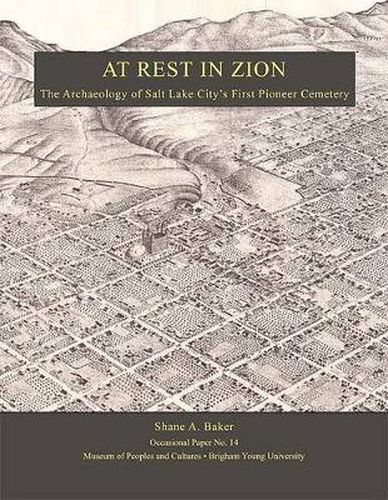Readings Newsletter
Become a Readings Member to make your shopping experience even easier.
Sign in or sign up for free!
You’re not far away from qualifying for FREE standard shipping within Australia
You’ve qualified for FREE standard shipping within Australia
The cart is loading…






In July of 1847 the first company of Mormon pioneers entered the Salt Lake Valley, having endured months of weary travel on their route to find Zion. The first recorded death in the valley, a 3-year-old boy, occurred just eighteen days after the group’s arrival. That small boy, and the other members of the company who died in the opening years of the new settlement, were buried in a small family plot on Block 49, the city block immediately east of Salt Lake City’s first pioneer fort. Within three decades the cemetery would be forgotten, covered by the building and growth of a rapidly expanding city. It would not be rediscovered until 1986, when new construction exposed the cemetery, allowing archaeologists to examine, study, and ultimately remove and relocate the burials.
This report details the protective efforts of archaeologists to excavate and document the burial grounds before they were destroyed by the construction. Subsequent forensic and osteological laboratory work has been coupled with intensive historical research in an effort to connect individual burials with names and histories, and to shed light on pioneer health, nutrition, mortality, and burial customs.
$9.00 standard shipping within Australia
FREE standard shipping within Australia for orders over $100.00
Express & International shipping calculated at checkout
In July of 1847 the first company of Mormon pioneers entered the Salt Lake Valley, having endured months of weary travel on their route to find Zion. The first recorded death in the valley, a 3-year-old boy, occurred just eighteen days after the group’s arrival. That small boy, and the other members of the company who died in the opening years of the new settlement, were buried in a small family plot on Block 49, the city block immediately east of Salt Lake City’s first pioneer fort. Within three decades the cemetery would be forgotten, covered by the building and growth of a rapidly expanding city. It would not be rediscovered until 1986, when new construction exposed the cemetery, allowing archaeologists to examine, study, and ultimately remove and relocate the burials.
This report details the protective efforts of archaeologists to excavate and document the burial grounds before they were destroyed by the construction. Subsequent forensic and osteological laboratory work has been coupled with intensive historical research in an effort to connect individual burials with names and histories, and to shed light on pioneer health, nutrition, mortality, and burial customs.